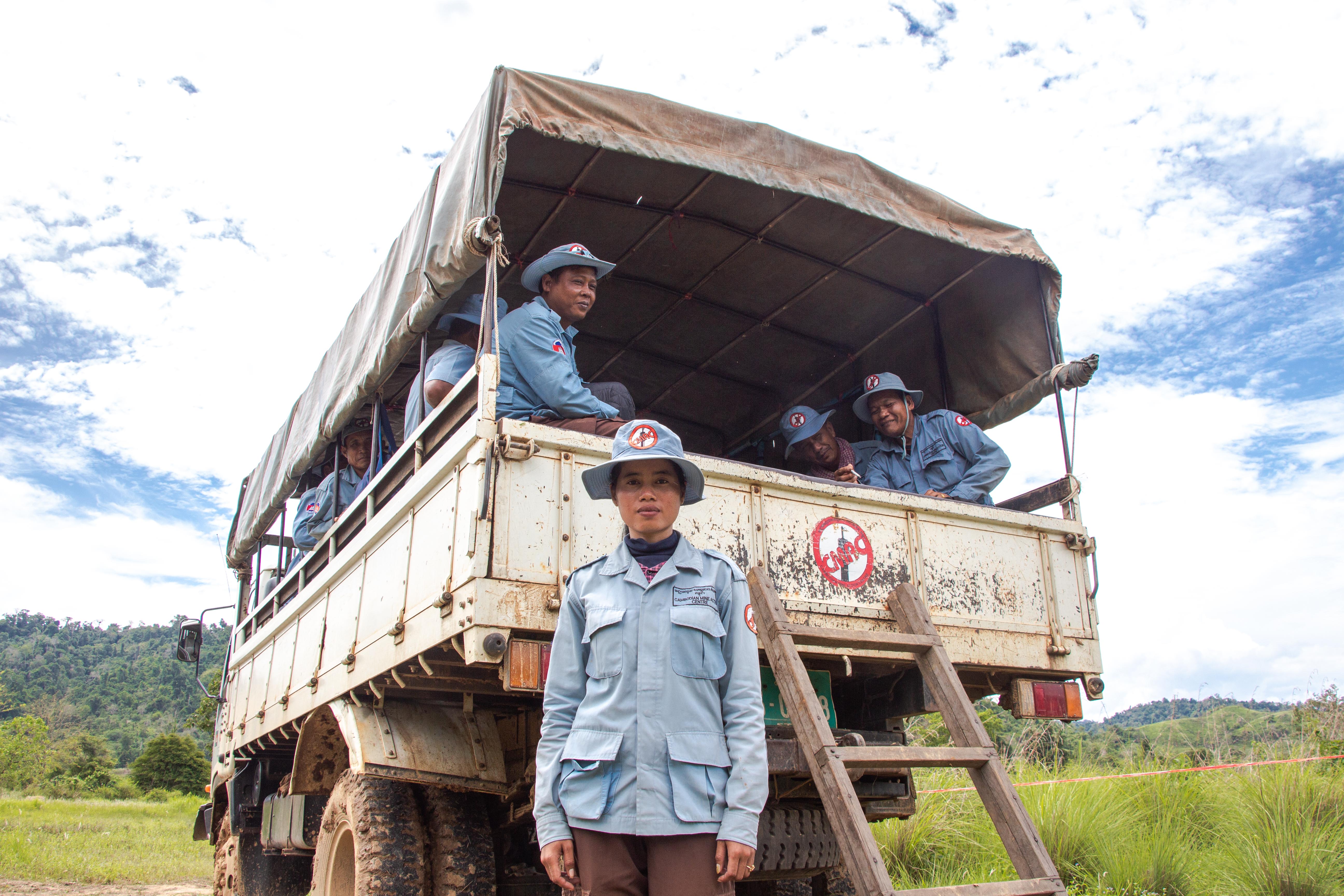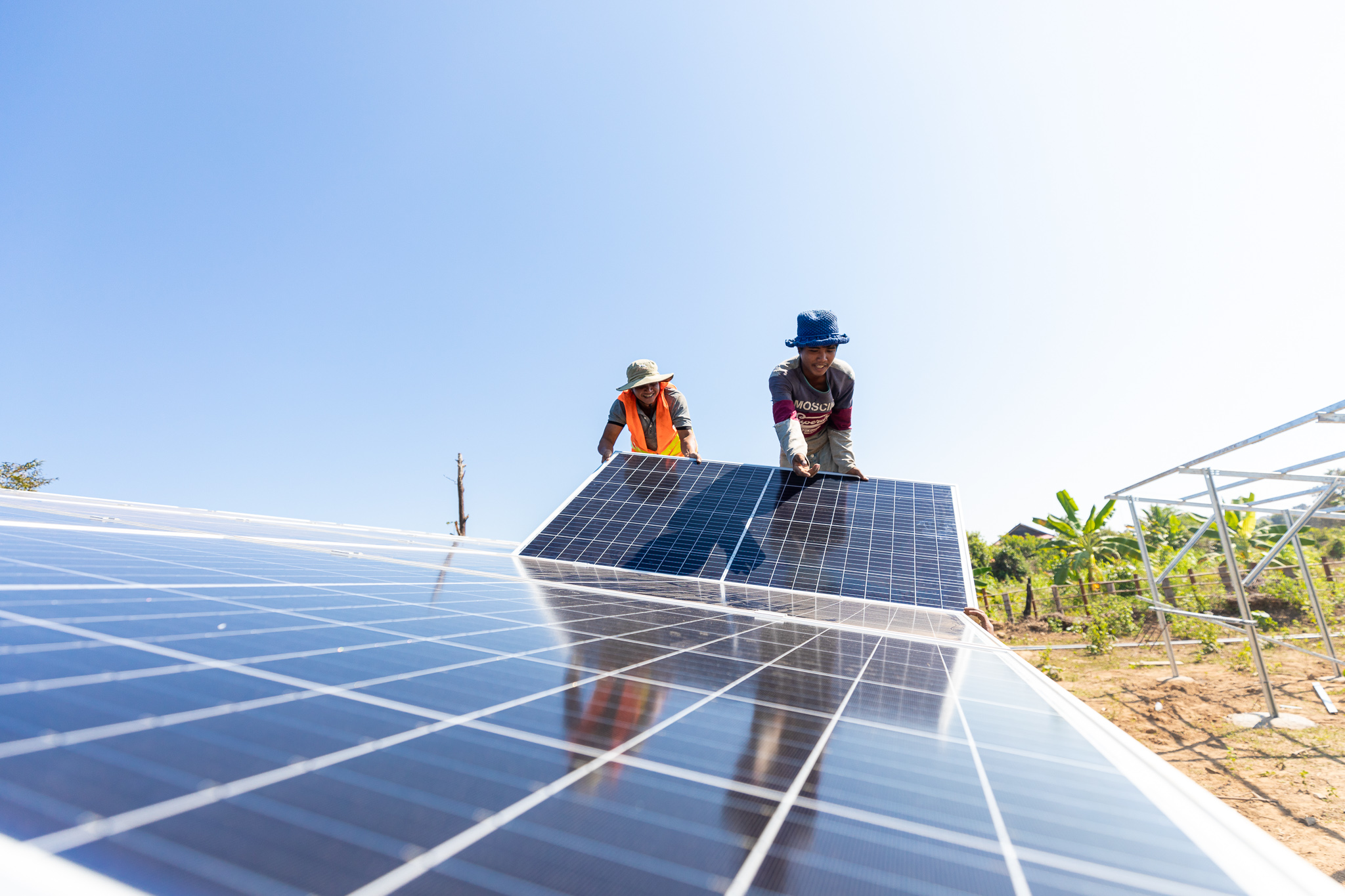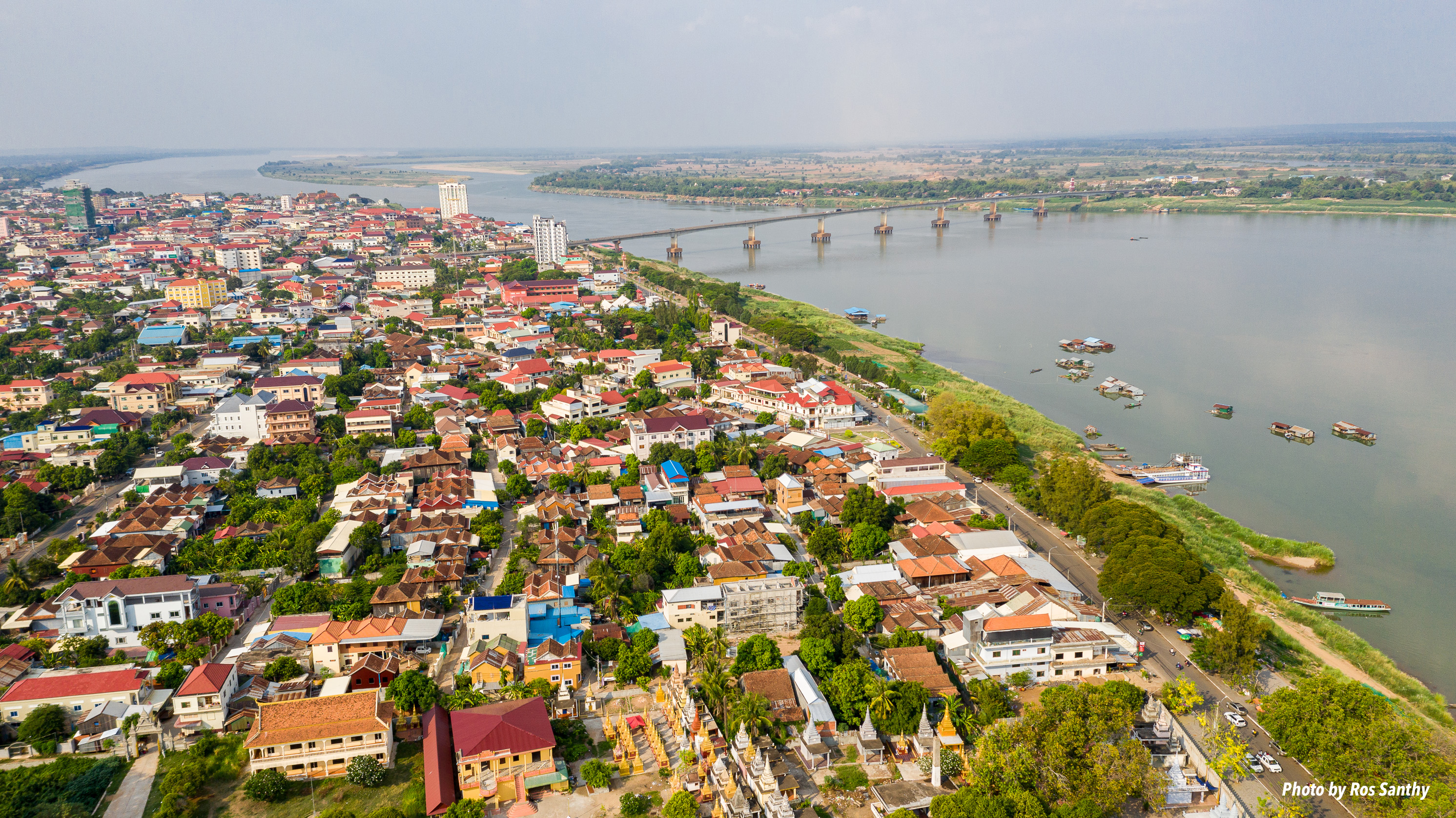Canal rehabilitation projects have also led to the development of roads, helping to mobilise communities like Laak village in Santouk district
Communities in Kampong Thom province are on the frontlines in the battle against the climate crisis. Despite social and economic growth in this region of Cambodia, erratic drought and flooding have devastated agricultural communities for the better part of a decade, stunting sustainable development. In response to growing concerns regarding climate change and agricultural development, a government-backed initiative has worked with local communities in this region to rehabilitate irrigation systems. The project, Strengthening Resilient Livelihoods (SRL), aims to reduce reliance on seasonal weather patterns by ensuring sustainable and reliable access to water for agricultural households.
In a conversation with Commune Chief, Thuo Seng from the Baray district, he described how the rehabilitated system of canals supports approximately 500 hectares of farmland. Since the project’s completion, farming land in his commune has proven more productive, more economically viable, and less labour intensive.
Traditionally, households in the Baray commune cultivated swaths of cash crops—such as rice—while also maintaining family-based gardens to grow vegetables and fruit. Although crop diversification promotes a more nutrient-rich diet for rural families, the constant rotation does have detrimental impacts on soil quality.
Crop specialisation typically provides the highest economic return; however, expanding crop rotation mitigates risk for vulnerable families living in sustenance-level poverty. Meaning, families sitting near the poverty line are often risk-adverse when it comes to specialising in cash crops because the outcome could be disastrous. A compromised rice field during the growing season could directly impact food security for rural families, should alternative crops not be available. The newly rehabilitated canals project by SRL will aid in reducing the risk associated with specialising in cash crops, helping to improve the quality and quantity of high-value crops, as well as growing household incomes and stimulating the local economy.
Lush rice fields depend on rainfall in Laak village, Santouk district, but erratic monsoon seasons are disrupting annual harvests.
Improved agricultural output is not an anomaly in this region, suggested Commune Chief Heng Chea from the Santouk district. In the past, most crop yield went to domestic consumption. Whereas today, Chief Chea said the majority (around 70 percent) of agricultural yield is now sold in local and national markets. Farmers in this region have experienced a bump in profits from simply being able to sell more product in competitive markets.
“Now they can cultivate at least two times a year, so [the project] is definitely helping,” explained Chea.
Commune Chief Heng Chea from Laak village standing in front of a newly rehabilitated irrigation system in Kampong Thmor commune.
Although there are some visible benefits from the project, it is important to remember that several factors contribute to the economic development of communities. Most of the farmers I spoke to in this region cited improved crop yield, but also reiterated the large amounts of debt incurred to support their livelihoods. It’s true that some of the debt incurred was funnelled into resources needed for agricultural expansion—i.e. better-quality soil and equipment. However, without a comprehensive picture of interest rates and household spending, it is difficult to say for certain how or if there is a relationship between increased debt and increased productivity.
Adding colour to this extremely abstract picture, female farmer, Ly Vang from Laak village in the Santouk district, said she is hopeful that the rehabilitated canals will improve her economic situation, allowing her to cultivate and sell enough rice and vegetables to help pay down her debts. The canal project recently wrapped up in her area, so thorough quantitative benefits are hard to cite, but she did mention a noticeable cut in labour costs because of improved water accessibility and increased crop yield.
UNDP staff listening to Commune Chief Heng Chea illustrate some of the climate-induced challenges his community is currently facing.
Some of the primary issues facing communities in this region of Cambodia centre around sustainable agricultural practices and their relationship to climate change, as well as improving productivity and expanding into competitive markets. In light of tackling this complex, and at often times contradictory problem, the SRL project focuses their efforts on creating and implementing comprehensive and well-rounded solutions. For example, a primary component of the project includes climate change education alongside the development of agricultural practices that will yield higher profits and quality products. Sustainable and profitable agriculture development is possible, but adept financial literacy, management training, and increased access to manageable credit are required.
Keo Naro from Thnol Jeat village in the Baray District is a member of the local “Water User Group.” Managed by a team of leaders (including a deputy leader and cashier) the primary mandate of the group is to provide water division assistance and skill development programmes to the community. The Water User Group also facilitates community conflict resolution, manages infrastructural maintenance, and provides education on water management protocol. There are 30 members in the Water User Group in Naro’s village, most of whom are women.
“Before there was no canal system built in this area to irrigate water properly, but now we can provide regulated irrigation block by block to the lower farmland areas,” explained Naro.
In her community, Ly Vang was elected to be the cashier of the Water User Group. Vang does not have a background in finances, but through financial literacy workshops, she developed the skills required to manage the water collection fees in her community. She is currently working with other group members to determine the annual fee for the irrigation system, and to strategize a penalty system for community members who do not adhere to canal rules and regulations. Funding garnered from user fees and penalties will finance the maintenance of the canal and other related operational costs.
Thirty-eight-year-old Ly Vang from Laak village said she lost around 90 percent of her crop yield from last year’s drought.
In both communities, inclusive growth is promoting development. However, the threat of climate change in this region, and Cambodia more broadly, is unavoidable. Moving forward, Commune Chief Heng Chea, said he’s eager to work with NGOs and the government to find solutions to challenges induced by the changing climate.
“I want to promote the development of sustainable agricultural practices because this is how we will encourage socio-economic stimulation and improve livelihoods,” added Chea.
Commune Chief Thuo Seng expressed similar sentiments for his community in the Baray district. The SRL project has assisted the community in establishing a strong foundation for continued growth, but further educational and infrastructural developments are needed. Specifically, Seng is pushing for an expanded irrigation system, as well as the construction of a community pond. According to Chief Seng, the government is currently working with the Baray commune to explore solutions to these challenges.
To date, a total of 389 provincial, district, and commune councillors have been actively involved in the process of integrating climate change adaption priorities into local planning strategies. One-hundred-one farmer groups have been formed, representing 2,246 households engaging in water utilisation, and livelihood improvement initiatives. The next phase of the project includes continued agricultural training, specifically regarding resilient agricultural techniques and practices, such as chicken raising and sustainable home gardens.
For more information on SRL, click here. To read the first article on this issue, click here.
Author: Cassandra Jeffery and Samnang Yang
Photographer: Manuth Buth

 Locations
Locations
























